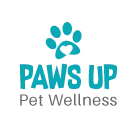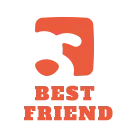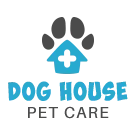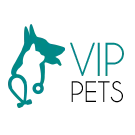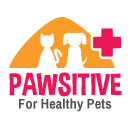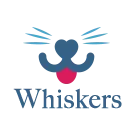Vet Vocabulary
Veterinarian comes from the Latin word veterinariusmeaning "of or having to do with beasts of burden".
Do you enjoy impressing your friends with new and unfamiliar words? Or do you want to just understand what your vet is talking about. We've got vet vocab to help you talk the talk.
Acetabulum: The femoral head fits into this rounded portion of the pelvis to form the hip joint.
ALK Phosphatase: A liver enzyme. A blood test called a Serum Chemistry Profile checks the levels of this enzyme; if the levels are higher than normal, this could mean that the patient has liver disease.
ALT: A liver enzyme. Higher than normal levels mean the patient may have liver disease.
Aorta: A large blood vessel that delivers blood high in oxygen from the heart to the rest of the body. The aorta is the largest artery in an animal's body. The left ventricle pumps blood that is high in oxygen to the rest of the body through the aorta.
Anesthesia: A drug that causes an animal to lose consciousness and not feel pain during a surgical procedure.
Artery: An artery is an elastic vessle that carries blood away from the heart. Arterial blood is rich with things the body needs, such as oxygen and nutrients.
Atria: The atria are the chambers of the heart which receive blood and pump it into the ventricles. There is a left atrium and a right atrium.
Bladder: The organ that acts as a reservoir for urine.
Blood: Blood is a fluid that transports oxygen and nutrients to all parts of an animal's body. It also serves to carry away waste products. Blood is composed of a solid portion consisting of blood cells and platelets, and a fluid portion called plasma.
Blood Gas Analysis: This is a test that evaluates the respiratory system of the patient. It analyses arterial blood and records pH, bicarbonate, oxygen, and carbon dioxide levels.
Blood Vessel: One of the many "pipes" in the body through which blood flows.
CanineTeeth: The four large, pointed teeth.
Carbon Dioxide: A gas byproduct of metabolism that is removed from the blood by the lungs.
Carpal Bones: The small bones that make up the wrist joint.
Cataract: A clouding of the lens inside the eye.
Cervix: The part of the female reproductive system which connects the uterus and the vagina.
Chemosis: Accumulation of fluid in the pink tissues (conjunctiva) surrounding the eye, giving it a puffy appearance.
Complete Blood Count (CBC): This is a series of tests that evaluates red blood cells, white blood cells, and platelets. This can quickly tell a veterinarian whether a patient has a variety of problems including anemia, an infection, or a bleeding disorder.
Cornea: The transparent outer portion of the eyeball that covers the pupil and iris and lets light into the eye.
Corneal Fibrosis: The formation of scar tissue on the cornea in response to injury or chronic disease. This gives the cornea a white-gray color in the damaged areas.
Diabetes: A disease caused by the failure of an animal's pancreas to produce insulin. Insulin is a hormone that allows blood sugar (glucose) to be utilized by cells.
Diaphragm: The diaphragm is a thin muscle that aids in breathing; it separates the chest cavity (thorax) from the abdomen.
Electrocardiogram (EKG): A printout of the analysis of the electrical activity of the heart.
Electroretinogram (ERG): A test used to evaluate the electrical function of the eye. It records the electrical changes in the retina of the eye after stimulation by light. It is similar in function to an EKG, which measures the electrical activity in the heart.
Elevated Heart Rate: There are many things that can increase a dog's heart rate. Some reasons include excitement, blood loss, and infection. Some birth defects can alter the direction of the flow of blood, causing the heart to pump harder and faster.
Enucleation: A surgical procedure which removes the eye. It is recommended for cases with painful or blind eyes.
Femoral Head: The upper portion of the femur that is part of the hip joint.
Femur: The thighbone, the bone between the knee and the pelvis.
Fetus: A developing baby in the uterus
Fibula: One of the two bones between the knee and the foot. The fibula is the smaller of the two.
Glaucoma: Increased pressure inside the eye, which can be painful and may lead to blindness.
Globulin: A type of protein in the blood.
Heart: The heart is a pump which circulates blood through an animal's body. The heart has four separate sections called chambers. The heart also has a left side and a right side. The two smaller chambers on the top of the heart are called the left atrium and the right atrium. The two larger, more muscular chambers at the bottom of the heart are called the left ventricle and the right ventricle.
Hormone: A hormone is a chemical which serves as a messenger or as a regulator of a process in the body.
Humerus: The longest bone of the forelimb; it extends from the shoulder to the elbow.
Increased Respiratory Rate: Many things can cause an animal to breath faster than normal. These include excitement, pain, lung diseases such as pneumonia, and heart diseases.
Inflammation: The body's response to an infection. It can result in pain, redness, swelling, heat, or loss of function.
Iris: The colored part of the eye. In the middle of the iris is a black opening called the pupil. Muscles attached to the iris can make the pupil larger or smaller.
Kidney: These organs filter the blood and form urine. They also control the blood levels of some chemicals such as sodium, hydrogen, and potassium.
Large intestine: This structure is also called the colon and is responsible for the formation and storage of feces, and the absorption of water.
Left Atrium: Blood from the lungs that is high in oxygen flows through the pulmonary veins and into the left atrium.
Left Ventricle: The left ventricle receives blood from the left atrium and pumps in into the body through the aorta.
Lens: The part of the eye that serves to focus incoming light on a specific area on the retina.
Lens Luxation: Displacement of the lens out of its normal position in the eye.
Liver: This organ has a variety of functions including digestion, metabolism, and detoxification.
Lungs: The lungs are organs in the chest which serve to add oxygen to and remove carbon dioxide from the blood.
Mandible: The lower jaw bone.
Maxilla: The upper jaw bone.
Metabolic: Having to do with an animal's metabolism, which is the sum of all the chemical and physical processes in the body used to make and utilize energy.
Metacarpal Bones: Similar to a person's palm, these are the bones between the wrist and the toes.
Murmur: An abnormal heart sound that is caused by blood flowing in the wrong direction.
Metatarsal Bones: These are the bones between the ankle joint and the toes.
Nonresponive Pupil: Normally, the pupil should constrict when you shine a light on it, and dilate in the dark. When the pupil does not respond, this indicates damage to the eye, and possible loss of vision.
Olecranon: Part of the ulna which forms the "point" of the the elbow.
Optic Nerve: A nerve that carries impulses from the retina to the brain to form an image.
Oxygen: A gas that is used by cells in the body for the process of metabolism. The lungs serve to add oxygen to the blood through respiration.
Palpation: A technique by which a veterinarian presses lightly with his hands to feel the structures below the skin, such as bones, organs, or tissues.
Patella: The kneecap.
Patellar Luxation: A condition in which the knee cap slips out of place.
Phalanges: The bones of the toes.
Platelet: A small cell in the blood which helps it to form clots.
Prognosis: A prediction of the outcome of a disease, whether or not the patient will recover.
Pulmonary Artery: Blood that is low in oxygen is pumped from the right ventricle to the lungs through the pulmonary artery. This is the only artery in the body that carries blood low in oxygen. Arteries usually carry blood that is high in oxygen.
Pulmonary Veins: Oxygenated blood is pumped from the lungs to the left atrium through the pulmonary veins. These are the only veins in the body that carry oxygenated blood. Veins usually carry blood that is low in oxygen.
Pupil: A black opening in the colored part of the eye (iris). Muscles in the iris can make the pupil larger or smaller in response to light.
Quadriceps Muscles: Muscles above the knee that serve to extend, or straighten, the leg.
Radiographs: Commonly known as X-rays
Radius: One of the two bones of the forearm; it extends from the elbow to the wrist.
Red Blood Cell: A special type of cell in the blood that is used to transport oxygen throughout the body.
Respiration: The process carried out by the lungs which removes carbon dioxide and adds oxygen to the blood.
Retina: The rear surface of the eye. It contains nerve cells called rods and cones. The rods are sensitive to light and the cones are sensitive to color. The retina receives light and color and converts it into nerve impulses that go to the brain to form an image.
Retinal Detachment: This occurs when the retina separates from its normal place on the back wall of the eye. The retina then has a decreased blood supply, and will degenerate and lose its ability to function if it remains detached.
Ribs: A series of bones in the chest which form a cage and protect the organs inside.
Right Atrium: Blood from the body that is low in oxygen flows into the right atrium.
Right Ventricle: The right ventricle receives blood from the right atrium, and pumps it into the lungs through the pulmonary artery.
Scapula: This is a flat bone that, along with the humerus, forms the shoulder.
Serum Chemistry Profile: A wide variety of tests that examine how organs such as liver and kidney are functioning.
Skull: The skull serves to protect the brain from injury.
Small intestine: This structure serves to absorb nutrients from food.
Spinal Cord: A bundle of nerves that connects the brain to all other parts of the body.
Spine: Also called the backbone, this is a series of bones which surround and protect the spinal cord from injury.
Spleen: This organ stores red blood cells and helps to filter the blood.
Stifle: Another name for the knee.
Stomach: This organ serves to breakdown and store food.
Tapetal Reflection: The tendency for an animal's eye to "glow". It is caused by light reflecting off the colored tissue on the back of the eye, known as the tapetal fundus.
Tapetum: The layer of reflective tissue that is on the back of the eye.
Tarsal Bones: These are the bones which form the ankle joint (hock).
Tendon: A strong type of fibrous tissue that connects muscle to bone.
Tibia: The bone between the knee and the foot.
Trachea: Also called the windpipe, the trachea allows air to pass from the mouth to the lungs.
Transilluminator: An instrument that generates bright light to aid in the examination of the eye.
Trochlear Groove: The place on the femur between two bony ridges which holds the kneecap in place.
Ulna: One of the two bones of the forearm; it extends from the elbow to the wrist.
Ultrasound: A diagnostic technique used to get images of deeper structures within the body by using sound waves.
Uterus: The organ in female mammals in which the fetus develops
Uveitis: Inflammation of the eye.
Vagina: Also called the birth canal, the part of the female reproductive system which connects the cervix to the outside of the animal.
Vein: A vein is a blood vessel that transports blood from the body back to the heart.
Ventricles: The more muscular chambers of the heart which pump blood into either the lungs or back into the body.

